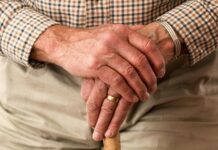Sometimes the best way to learn about something is to try to recreate it. The necessary building blocks and their arrangement can say a lot about the original. How is a structure the shape of a fruit roll-up helping unravel biological questions?
Alison McGuigan, professor of chemical engineering and biomedical engineering at the University of Toronto’s Medicine by Design, is deciphering complex biological systems by trying to build them.
“If you imagine you might have a toy car, and if you learn with Lego blocks how to assemble that car, then you learn something about the car,” explains McGuigan.
“So we’re trying to build models of tissues, so that we can try and understand things about those tissues that ultimately will help us understand how to develop new therapies to help people.”
One important element in building tissues in the lab is recreating their three-dimensional nature. Growing cells in a flat layer in a dish won’t capture all of the complex interactions that they experience in the body because their positions and surroundings matter.
McGuigan focusses on building models of muscle regeneration, and her lab assembles their tissue models in a unique way. Starting with very thin layers of cells and biomaterials, she rolls them up to make a 3D structure that she likens to a fruit roll-up or Swiss roll.
Here the cells each experience different microenvironments, signals, and cues based on their positions in the roll. The hope is that systems like these will also provide responses that more closely resemble those seen in nature, giving more accurate results for drug discovery and testing.
Not only is this a simple method for assembly, but when it comes time to do their analysis, the structure can simply be unrolled (it’s actually very satisfying to watch, and you can view a video on McGuigan’s website). The results can then be connected back to each cell’s original position in the roll.
“Cells are kind of like people, so they care who their neighbours are, and what environment they’re in, and they behave accordingly,” says McGuigan.
“So what we need to do is be able to take cells from very specific environments and understand how they’re behaving to try and really understand how we can manipulate those interactions for therapeutic purposes.”
In imitating nature, these rolled tissue structures are helping unfurl mysteries in both health and disease.







































